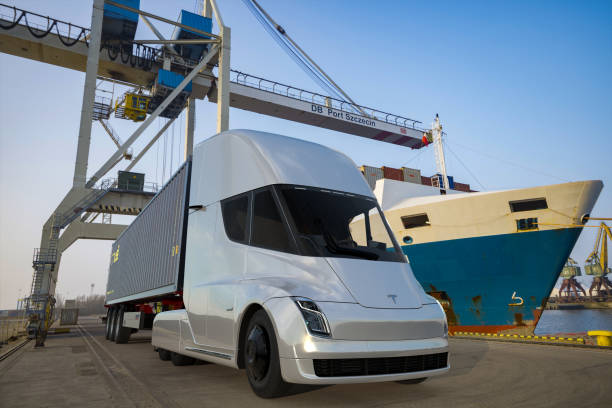Automated trucks, also known as self-driving trucks, have been on the horizon for several years. These vehicles have the potential to revolutionize the transportation industry by improving efficiency, reducing accidents, and lowering costs. According to a recent report by the International Transport Forum (ITF), the number of automated trucks on the roads is set to increase dramatically, reaching 1.2 million per year by 2032.
The ITF report predicts that the adoption of automated trucks will be driven by a range of factors, including cost savings, improved safety, and increased efficiency. The report notes that automated trucks are expected to reduce labor costs, which account for a significant portion of the overall cost of operating a truck. The report also notes that automated trucks are expected to improve safety by reducing accidents caused by human error, which is responsible for a large number of accidents on the roads today.
Automated trucks are also expected to improve efficiency by reducing the amount of time trucks spend on the road. The ITF report notes that automated trucks are expected to be able to drive for longer periods without rest, which will reduce the amount of time trucks spend in transit. This will lead to faster delivery times and lower costs for businesses that rely on transportation.
The ITF report predicts that the adoption of automated trucks will be gradual, with the number of automated trucks on the roads increasing steadily over the next decade. The report notes that the initial adoption of automated trucks is likely to be in specific industries, such as mining and agriculture, where the routes are well-defined and the environment is less complex.
The report also notes that the adoption of automated trucks is likely to be slower in urban areas, where the roads are more complex and there is more pedestrian and vehicular traffic. However, the report predicts that automated trucks will eventually be adopted in urban areas, particularly for last-mile deliveries.
One of the biggest challenges facing the adoption of automated trucks is regulatory approval. Currently, the use of automated trucks is restricted in many countries due to safety concerns. Governments are working to develop regulations that will allow the safe use of automated trucks on the roads.
Another challenge facing the adoption of automated trucks is public perception. Many people are concerned about the safety of automated trucks and the impact that they will have on jobs. The ITF report notes that it will be important for businesses and governments to communicate the benefits of automated trucks to the public in order to overcome these concerns.
Despite these challenges, the adoption of automated trucks is likely to increase rapidly over the next decade. The ITF report predicts that the number of automated trucks on the roads will reach 1.2 million per year by 2032, which is a significant increase from the current number of automated trucks on the roads.
The adoption of automated trucks is expected to have a range of benefits for businesses, including cost savings, improved safety, and increased efficiency. However, it is important for businesses and governments to address the challenges facing the adoption of automated trucks in order to realize these benefits.
In conclusion, the adoption of automated trucks is set to increase rapidly over the next decade, with the number of automated trucks on the roads reaching 1.2 million per year by 2032. While there are challenges facing the adoption of automated trucks, such as regulatory approval and public perception, the benefits of automated trucks, including cost savings, improved safety, and increased efficiency, are likely to drive their adoption in the transportation industry.







